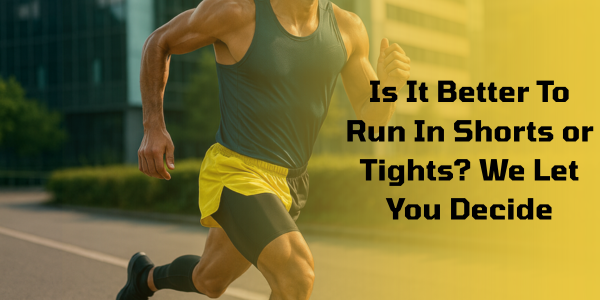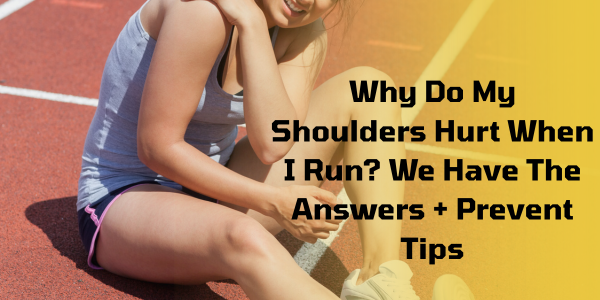TL;DR – 90-Second Game Plan
- Root cause snapshot: sinus pressure, jaw clenching, dehydration, hidden cavities, and temperature shock are the five usual suspects.
- Breathe warm, breathe easy: Switch to a nose-first inhale and throw on a lightweight buff if the air is biting.
- Unlock the jaw: Every mile marker, consciously drop your jaw and let the shoulders shake out.
- Hydrate with purpose: 300–500 ml of fluid—and the right electrolytes—every hour keeps saliva flowing and enamel calm; explore our hydration essentials.
- Temporary fix, lasting confidence: A slim mouthguard can save race day, but schedule a dental check if pain lingers beyond 24 hours.
Train Smarter with Streetlight
Your Teeth Aren’t Just Passengers—They’re Athletes Too
Imagine toeing the line at dawn, lungs eager, quads buzzing, crowd roaring. Then—zap!—a flash of pain sparks from a back molar. It’s the kind of jolt that steals focus and can wreck pacing plans faster than a missed turn. If you’ve ever muttered, “Why do my teeth hurt when I run?” you’re not alone. From marathon rookies to Ironman vets, oral discomfort sneaks up on endurance athletes with surprising frequency.
The good news? Most triggers are fixable with a handful of science-backed tweaks. Over the next few scrolls we’ll dive into the physiology, bust common myths, and arm you with coach-approved solutions gleaned from thousands of training logs inside Streetlight’s Stride Lab. You’ll also discover why veteran racers stash a pocket-size AfterBurn Mini beside their gels—because tooth pain rarely travels solo; discomfort loves company.
We’ll tackle jaw tension drills, hydration chemistry, and the subtle art of temperature control. Plus, we’ll show you how a full-size AfterBurn stick and a well-timed dental check can transform a grimace into a finish-line grin. Ready? Let’s trade grimacing miles for confident, pain-free strides.
Can Running *Really* Make Your Teeth Hurt?
Myth #1: “It’s Just in Your Head.”
Reality? The pounding cadence of each foot-strike travels through the sinus floor—so yes, vibration absolutely can trigger tooth-root nerves. For the full low-down on how friction and impact wreak havoc body-wide, check out our running anti-chafe guide.
Myth #2: “Only Cold Weather Causes It.”
Summer racers feel it too. The culprit is often dry mouth from rapid breathing—saliva plummets, enamel dries, nerves fire. Hydration timing matters more than the thermometer.
Myth #3: “A Pain-Free Dentist Visit Means I’m Clear.”
Micro-caries and hairline cracks can be invisible on X-rays yet scream under impact. Schedule a performance dentistry check twice a year, especially if you log 40+ training miles weekly.
Myth #4: “Jaw Clenching Has Nothing to Do with Pace.”
Stress elevates bite-force up to 250 lb—enough to bruise periodontal ligaments. An easy technique? Sync jaw relaxation to every exhale, a tactic borrowed from our triathlon gear & mindset blueprint.
The Physiology Explained—5 Core Culprits
| Cause | Why It Happens | Common Search Question | Immediate Fix |
|---|---|---|---|
| Sinus Pressure & Cold Air | Vibration + frigid inhalation irritates maxillary sinus roots that share nerve pathways with your upper molars. | “Sinus makes teeth hurt when running?” | Warm-up breathing drills; lightweight buff over nose to pre-heat air. |
| Jaw Clenching (Bruxism) | Fight-or-flight tension spikes bite force during tempo or hill surges. | “Should I wear a mouthguard while running?” | Practice tongue-to-palate cue every kilometer; consider slim athletic guard. |
| Dehydration & Electrolyte Loss | Low saliva exposes dentin, turning every cold sip into a nerve jolt. | “Why do dehydrated teeth ache?” | 300–500 ml/hr plus 600 mg Na+/l; stock up via our hydration collection. |
| Micro-Cavities & Enamel Cracks | Small lesions magnify under stride impact, firing the pulp. | “Can cavities hurt more during exercise?” | Book a dentist; apply high-fluoride varnish pre-race if needed. |
| Temperature Shock | Ice-cold gels or sports drinks slam sensitive enamel mid-effort. | “Teeth sensitive to cold workout drinks” | Alternate gulps with room-temp water; stash drink in an insulated flask. |
Shoulder pain sometimes tags along with jaw tension—if you’re battling both, our science-first guide on why shoulders hurt while running is your next must-read.
Diagnostic Checklist for Athletes
Self-Scan: Post-Run Tooth Pain Audit (click any that apply)
Sharp ache with every foot-strike
Nerve shock that syncs to cadence—suspect sinus vibration or micro-cracks.
Dull throb ramping after mile 5
Late-onset dehydration dries enamel and exposes dentin.
Tingling only in cold air
Temperature shock meets maxillary roots—time for a buff or breathing warm-ups.
Jaw soreness the morning after
Overnight bruxism plus race-day clenching; consider a slim guard.
Pain on sugary gel intake
Hidden caries get poked by sweet carbs—book that dentist.
One-side only discomfort
Stride asymmetry or cavity; film yourself running to confirm.
Training load spikes matter, too—if you’re ramping mileage with our 25 K trail run training plan, pair this checklist with weekly dental self-assessments to stay ahead of pain.
Download Printable PDF Checklist
Training-Room Solutions
Breathing Mechanics Reset
Start every session with three rounds of 30-second diaphragmatic nose-breathing. The goal? Warm, humid air glides past sinus roots before pace picks up, slashing vibration-induced nerve flare-ups.
Jaw-Drop Countdown
Every kilometer—set an audible watch cue—drop the jaw, waggle it side-to-side, then re-set tongue on the palate. The micro-stretch relieves 200 + lbs of bite pressure. Curious how micro-movements fight friction? Our science behind anti-chafe sticks explains the physics in 90 seconds.
Hydro-Fuel Protocol
Match 0.7 ml per pound of bodyweight each hour under 70 °F, add 300 ml for every 10 °F above. Blend 600 mg sodium plus trace potassium to keep saliva rolling. Think sip-small-sip—never chug—to dodge temperature shock.
Tech & Gear Upgrades
Thermal Buff
Lightweight, moisture-wicking, folds into a gel pocket. Warm airs through sinuses, cools nerves—sub-six ounces of pure prevention.
Slim Athletic Mouthguard
Custom-boil options weigh under 15 g, allowing clean diction and unimpeded breathing while dampening jaw shock.
Recovery Ritual
Post-run, rinse 1 tsp salt in 8 oz warm water, then massage TMJ with two fingers for 60 seconds. Round out the evening with 400 mg magnesium glycinate. If lower-body aches join the party, our broken-toe tactics article shows how to stay race-ready while sidelined.

Expert Corner — Direct Answers from the Front Line
Dr. Tessa Nguyen, Sports Dentist
“Sinus-root crossover is real. I see marathoners with perfect check-ups who still wince at mile 10. Warm air and hydration fix 80 % of those cases.”
For runners battling chafing as well as tooth pain, start by knowing exactly what chafing looks like—it’s the same irritation cascade.
Coach León Morales, Performance Biomechanist
“Jaw tension is a pacing tax. Every clench steals oxygen. Sync a jaw ‘drop’ with each mile beep—you’ll save seconds and silence your molars.”
He also recommends a science-backed anti-chafe balm routine; relaxed muscles everywhere send calmer signals to the TMJ.
When Professional Help Beats DIY Tricks
Red-Flag Symptoms You Shouldn’t Ignore
- Pain lingers longer than 24 hours post-run despite hydration and jaw drills.
- Swelling or redness above a single tooth—could signal infection.
- Sharp “electric” zings when bending forward; often sinus blockage that needs an ENT flush.
- Night-time jaw or ear pain paired with morning headaches—textbook bruxism.
- Visible crack or discoloration after biting a gel packet mid-race.
Your Quick-Action Plan
- Document: Note mileage, weather, nutrition, and exact pain timing.
- Contact: Call a sports-smart dentist within 12 hours if swelling occurs.
- Cross-Team Consult: If congestion accompanies pain, book an ENT exam as well.
Why Do My Teeth Hurt When I Run Frequently Asked Questions
Can tooth pain ruin my performance metrics?
Yes. Studies show acute orofacial pain can elevate perceived exertion by up to 12 %, trimming VO2 max capacity. Fix the pain, buy back speed.
Will a mouthguard restrict breathing?
Modern slim guards weigh under 15 g and sit below the airway. After one acclimation run, most athletes report zero change in ventilation.
Is sensitive toothpaste enough?
It’s a helper, not a cure. Combine it with hydration timing and jaw-relax drills for sustainable relief.
Could electrolyte imbalance cause shooting pain?
Indirectly, yes. Dehydration dries saliva, exposing dentin. Re-balance with 600 mg sodium per liter and the pain often subsides.




